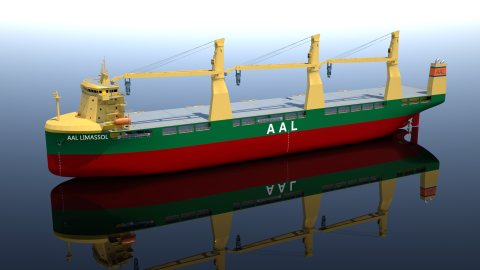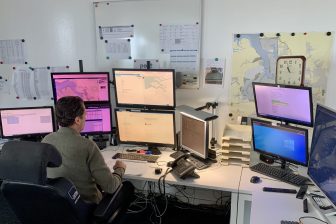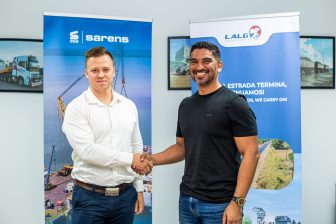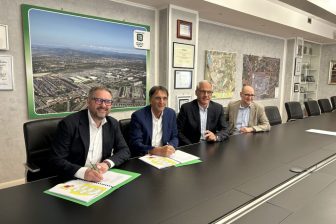
AAL testing, expanding and targeting large projects with its Super B newbuilds
The market has sort of normalised over the last two years, the multipurpose sector has gone through a correction, which is reflected in the charter rates. Recently it has been more business as usual for the heavy-lift MPP specialist AAL.
“Utilisation is still quite high. However, we are seeing a change in demand – not so much in whether ships are full, but rather in the lead time to fix those cargoes,” Christophe Grammare, managing director at AAL, told Project Cargo Journal. “Last year, vessels were fully booked six months in advance, now it is down to two months.”
According to Grammare, the company reacted to the situation over the last year, focusing on long-term customers, providing them with a clear forecast of available space and the rates and engaging early in dialogue – and some of these contracts are still rolling on.
“We see overall demand slowly winding down, but we haven’t had many vessels sailing spot. We are not there yet,” he said.
Map is opening
One thing that has become apparent throughout the recent period is that EPCs are looking for alternative sourcing regions. “No matter what happens, China will remain a big source for manufacturing, but EPCs are looking for a safety net, not to put their eggs in one basket,” Grammare said.

This diversification of sourcing has broadened the map for the likes of AAL, who are known for operating fixed route scheduled liner services and flexible trade routes. “For us, this has opened the map in terms of load points. While the focus previously might have been around China, we are now seeing manufacturing of heavy industrial components across Asia, in Taiwan, Vietnam, Indonesia, South Korea, etc,” said Grammare.
While previously the company would fully load a vessel in China and set sail to its destination, the sailing may now include two to three additional load ports on its regular trade lane.
Breaking out of the mould
The positive news for the company is that serving the market will not be an issue, even if the demand picks up again, as their six Super B Class heavy lift newbuilds are set to roll in next year in June.
To recap, earlier this year, AAL kicked off the construction of its Super B Class multipurpose vessel, the AAL Limassol, at the CSSC Huangpu Wenchong Shipyard in Guangzhou, China. It is the first of six next-generation 32,000 deadweight heavy lift multipurpose vessels with the flexibility and capability to safely accommodate up to 80,000 freight tonnes of cargo on a single sailing – and carry all cargo types, big and small.
Grammare added that the construction has been progressing without any issues, so much so that there was talk of bringing the delivery forward. AAL Limassol is slated for delivery in June 2024, with three more vessels to follow within a year, and another two in the year after.
This will open a new door for the company but, according to Grammare, AAL has been very careful not to stretch its fleet too wide on too many projects, but rather to focus on regularly servicing its trade lanes and tailormade tramp chartering solutions.
“Once we feel we are covering the trade lanes sufficiently, then we will look into expanding, maybe to another trading model,” he says. “That is why we have always been cautious about the projects we undertake. For our clients, this created a cargo and space guarantee and allowed us to build the relationships within the breakbulk and project heavy lift community that we enjoy now.”
However, the new vessels could break the mould and help the company allocate the newbuilds to large-scale projects, with demand very strong from the energy sector, which is what the newbuild fleet’s copious cargo intake was designed for.
Signs are already positive, as Grammare notes that project quotations with the Super B Class vessels are already looking more positive compared to the company’s current fleet. Even though AAL has one of the youngest fleets around, with an average age of 10 to 12 years, the new design comes with many advantages.
Additionally, Grammare said that AAL plans to put the vessels into service and learn from them, understand what they bring to the table and then use the learnings to bring forward a new design – once the fleet is in need of renewal. He added that the orders for the six newbuilds have come at the right time – due to the fact that AAL’s fleet is still a younger one, it will have time to learn and evolve the design, to meet market demands further in the future.
But this will be a staggered process, as the company’s fleet currently counts 30 vessels, and the renewal will not be done in one go but rather as needed.
Super B
Available from 2024, these innovative third-generation heavy-lifters have been designed to be the most competent MPVs in the water.
The vessels can accommodate over 42,000 cbm of cargo, with three 350 mt heavy lift cranes – combinable to a 700 mt max. lift. They feature 3,880 square metres of clear weather deck space, with extendable pontoons on the starboard side, to expand cargo stowage space further. Below deck, two large box-shaped cargo holds are optimised for dry bulk and feature adjustable triple decks and no centre-line bulkhead. With the superstructure positioned forward, there is unobscured sailing visibility and no physical restriction on cargo height.
The vessels are also adapted to sail with open hatch covers, enabling extremely tall and over-dimensional units to be safely stowed in the hold space.
Care to know more about the future fuels and designs that will lead towards zero-emissions shipping, then join us at Project Cargo Summit in Bremen (September 6-7). Haven’t yet booked your ticket? There is still some time left, register here!
You just read one of our premium articles free of charge
Register now to keep reading premium articles.




